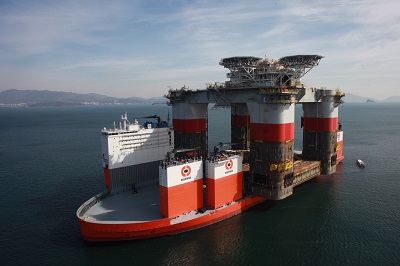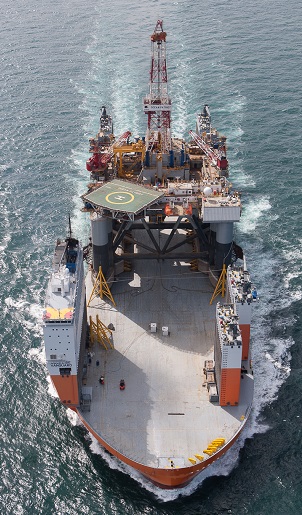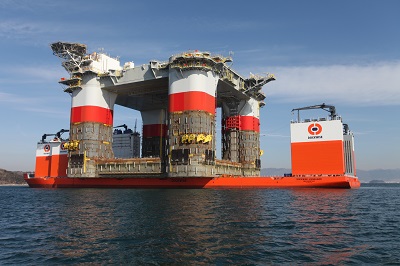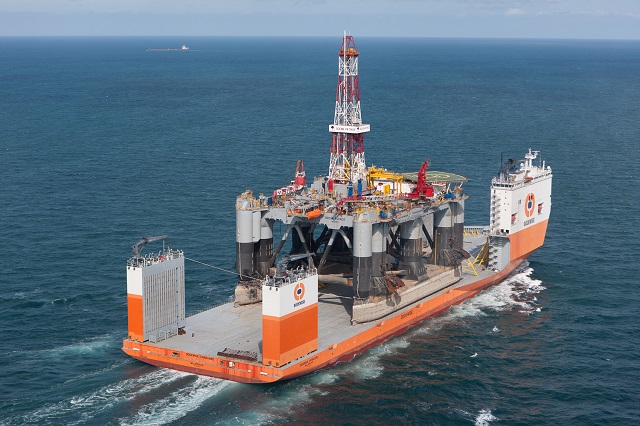At the Helm of the Dockwise Vanguard

Interview with Oleg Maryasov, Captain of the Dockwise Vanguard
Oleg Maryasov, Captain of the Dockwise Vanguard, has nearly 20 years’ experience navigating semi-submersible heavy transport vessels. Prior to the Dockwise Vanguard, he has navigated the Blue Marlin, the second largest semi-submersible HTV. Mr. Maryasov holds an Engineering Degree from the Maritime Academy from St. Petersburg, Russia.
 The Dockwise Vanguard is the world’s largest semi-submersible heavy transport vessel (HTV) capable to transport colossal offshore structures for the oil and gas industry. As the most innovative semi-submersible heavy transport vessel ever built, the Dockwise Vanguard is redefining the limits of exceptional heavy marine transport. The game changing vessel has been specifically built to enable oil and gas majors and EPIC contractors to consider design and transport opportunities for mega offshore units, which were considered unthinkable until recently.
The Dockwise Vanguard is the world’s largest semi-submersible heavy transport vessel (HTV) capable to transport colossal offshore structures for the oil and gas industry. As the most innovative semi-submersible heavy transport vessel ever built, the Dockwise Vanguard is redefining the limits of exceptional heavy marine transport. The game changing vessel has been specifically built to enable oil and gas majors and EPIC contractors to consider design and transport opportunities for mega offshore units, which were considered unthinkable until recently.
Being the Captain of one of the most impressive and unique vessels in the world, can you describe your responsibilities?
I am end responsible for the Dockwise Vanguard. Chiefly, I am responsible to ensure the safety of our people, the cargo and the vessel at all times. Having safety being top-of-mind ensures the crew adheres to the stringent procedures in place. Irrespective of whether we are loading, transporting or discharging cargo, open and seamless communications are essential to ensure operations are performed as expected.
What was your reaction when first seeing the Dockwise Vanguard?
 When I first saw the Dockwise Vanguard at the Hyundai Heavy Industries yard, I was impressed with the vessel’s size. Measuring 275 by 70 meters, the vessel is larger than the previous vessel I navigated, the Blue Marlin. Next to the sheer size of the vessel, I was concerned with the height of the bridge tower, in particul, the acceleration behavior of the accommodation block. We soon realized, however, that the acceleration of the tower was not a concern as she was built as solid as they get.
When I first saw the Dockwise Vanguard at the Hyundai Heavy Industries yard, I was impressed with the vessel’s size. Measuring 275 by 70 meters, the vessel is larger than the previous vessel I navigated, the Blue Marlin. Next to the sheer size of the vessel, I was concerned with the height of the bridge tower, in particul, the acceleration behavior of the accommodation block. We soon realized, however, that the acceleration of the tower was not a concern as she was built as solid as they get.
Furthermore, the bowless design was also something that required getting used to. Due to the asymmetric design, the navigation bridge and the accommodation block are located on the extreme starboard side. Much like an aircraft carrier, the Dockwise Vanguard makes use of the entire length of the deck to load and transport cargo. Today, we all have become accustomed to the size along with the asymmetric and bowless design of the vessel.
How does the Dockwise Vanguard differ from other semi-submersible heavy transport vessels?
The Dockwise Vanguard is unique in many ways. The vessel’s bowless design contributes to its unique appearance when compared to the other heavy transport vessels. In this way, she is capable to transport, for example, long spars and FPSOs that occupy the entire length of the vessel facilitating for an overhang at both stern and bow.
In addition, the vessel has a dedicated design for ultra-heavy units weighing up to 110,000 metric tons. Optimized deck strength and extreme wide-load capabilities are at the heart of the design philosophy; as are the vessel’s stability characteristics. It is equipped with a 27 MW redundant propulsion system consisting of two fixed propellers at the aft and two retractable azimuth thrusters at the bow. These can reach a maximum transit speed of 14 knots, which translates to average service speeds of 11-13 knots with cargo. In addition, the vessel allows for 16 meters water above deck, accommodating cargoes with a deeper draft.
Was the maiden voyage, transporting the Jack & St. Malo, a unique experience?
 The maiden voyage felt like a routine operation for the crew. Although being a very large hull weighing 56,000 metric tons, the Jack & St. Malo transport was business as usual. We transported the hull from Samsung Heavy Industries yard in Geoje, South Korea to Kiewit yard in Texas, United States.
The maiden voyage felt like a routine operation for the crew. Although being a very large hull weighing 56,000 metric tons, the Jack & St. Malo transport was business as usual. We transported the hull from Samsung Heavy Industries yard in Geoje, South Korea to Kiewit yard in Texas, United States.
Besides being the largest hull ever transported, mooring the vessel at the quayside in Corpus Christi was unique. The mooring winches on the vessel are located on the casings, which stand more than 30 meters above water. Usually, for HTVs, we drop anchor and stay at tanker and seldom moor at quayside.

